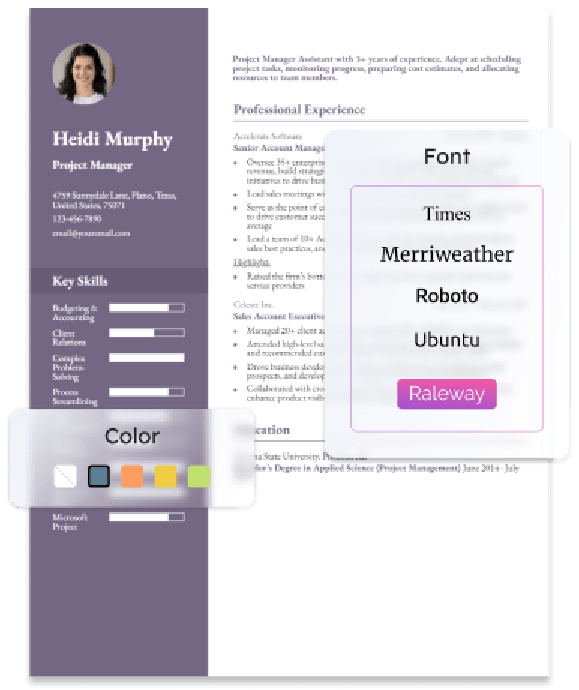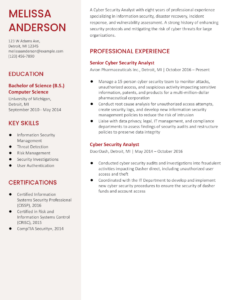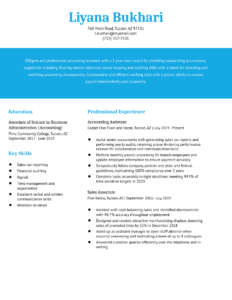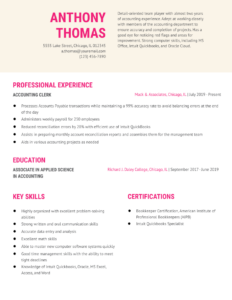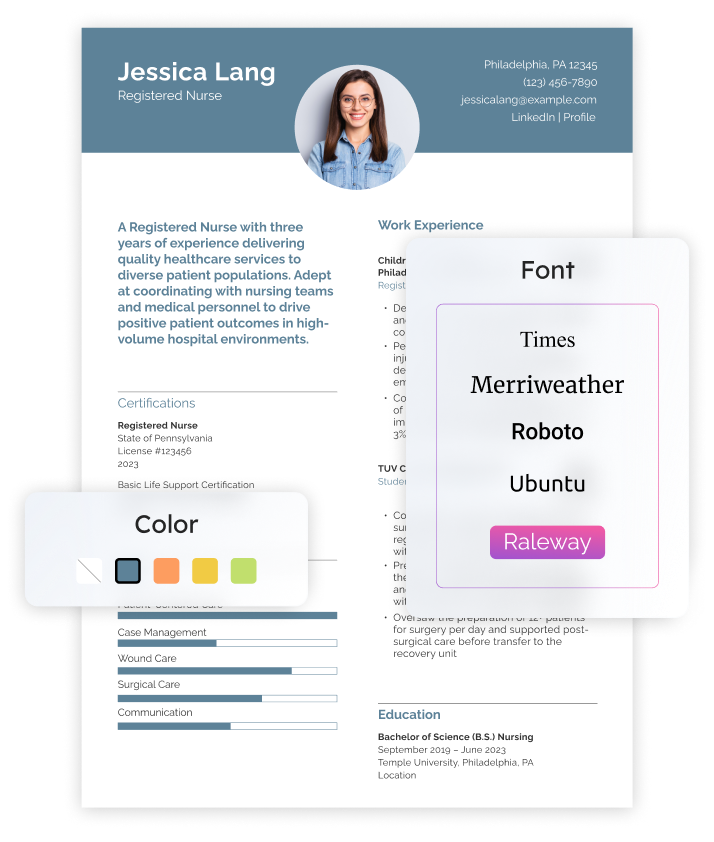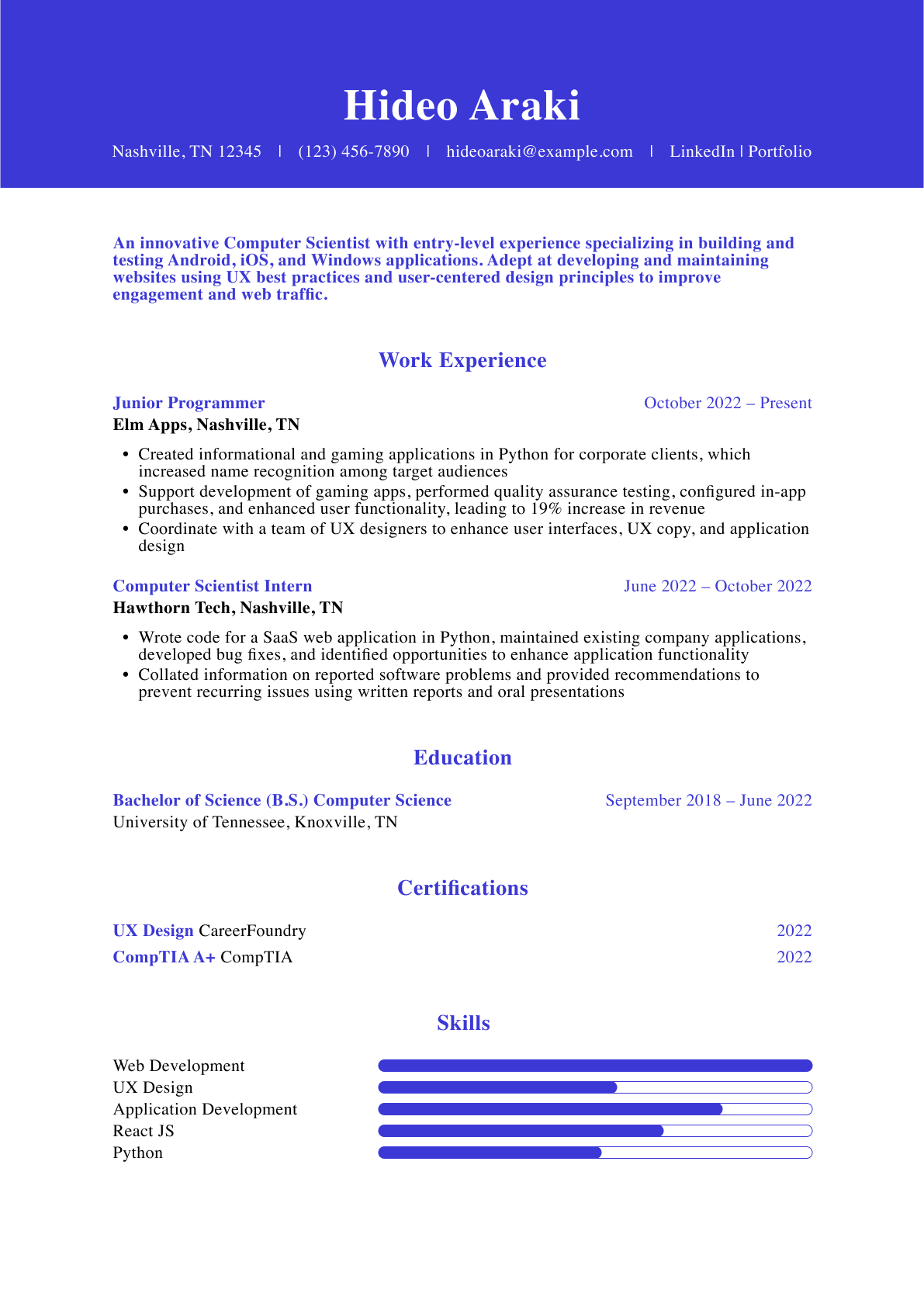How To Write a Pilot Resume
If you want to take the next step in your pilot career, the right resume can help you obtain a better position and continue to do what you love. Learn how to write a pilot resume and showcase your skills from flight planning and passenger communication to following Federal Aviation Administration (FAA) regulations with these tips. You’ll also find examples and templates to help you get started.
- Entry-Level
- Mid-Career
- Senior-Level
1. Create a profile by summarizing your pilot qualifications
On a pilot resume, the profile summary should let a hiring manager know how much experience you have and what you’re trained to fly. It’s important to include the number of hours of flight time you’ve accumulated, which planes you’ve flown, and any other details relevant to the job, such as whether you prefer short- or long-distance flights. Look for opportunities to include keywords from the job description in this section, such as collaborating with the flight crews or handling changing weather conditions.
Senior-Level Profile Example
An airline pilot with over 5,000 hours of flight time specializing in flight planning, Airline Transport Pilot (ATP), flight operations, and FAA regulations. A strong history of planning and executing long-distance commercial flights under a wide range of weather conditions. Expertise in the operation and maintenance of Boeing 747-400 and Airbus A350 aircraft.
Entry-Level Profile Example
An airline pilot with over 1,500 hours of flight time, specializing in commercial flights, navigation, aviation, and flight safety. Adept at communicating and coordinating with flight teams in high-pressure situations to ensure the safety of passengers and flight crews.
2. Create a powerful list of your pilot experiences
It’s important that your resume reflects your experience and skills as a pilot, and the bulk of this will happen in the professional work history section. This is where you list your previous (and current) job and what you accomplished in each role. While the basic duties may be the same, focus your bullets on numbers, such as how many flights you piloted and what was unique about that position. This helps hiring managers understand your background and whether you may be a good fit with their companies.
Senior-Level Professional Experience Example
Pilot in Command (PIC)
Delta Airlines, Boston, MA | August 2016-present
- Execute over 400 successful cross-country flights as the PIC, determine cancellations and flight delays based on aircraft condition and weather, and identify optimal changes to flight plans to ensure the safety of crews and passengers
- Manage the second in command (SIC), air hostesses, and crews, ensure compliance with Federal Aviation Regulations (FARs) and company policies, evaluate performance, and provide coaching and mentorship
- Communicate with passengers to deliver briefings on expected flight times, delays, scheduling changes, and weather conditions
Entry-Level Professional Experience Example
Second in Command
Air Charter Services, San Diego, CA | May 2018– July 2020
- Provided flight and navigation support to the PIC as the second officer, which included adjusting flight plans based on weather conditions and turbulence
- Performed safety inspections, interfaced with maintenance teams, and ensured adherence to federal aviation laws and regulations
3. List any education and certifications relevant to pilots
Showing you have the proper education and training to fly safely is an important part of creating a pilot resume. List any formal degrees you have and where you completed your flight training. Additional certifications, such as Certified FAA Airline Transport Pilot and Certified Flight Instructor, should also be included in this section to show a hiring manager you have additional skills and qualifications that make you a stronger candidate.
Education
Template
- [Degree Name]
- [School Name], [City, State Abbreviation] – [Graduation Month and Year]
Example
- Bachelor of Science (B.S.) Aeronautical Science
- Legacy Aviation, Philadelphia, PA – May 2014
Certifications
Template
- [Certification Name], [Awarding Organization], [Completion Year]
Example
- FAA First Class Medical, 2013
4. List key skills and proficiencies for pilots
As a pilot, you have a high degree of technical skills when it comes to flying, but also have to utilize other professional skills. It’s important to include a key skills list in your resume that lets you highlight your qualifications and abilities outside of the actual flying of the plane.
For example, pilots must be clear-headed and work well under pressure when there is inclement weather, an equipment failure, or a passenger causing a disturbance. Pilots also need strong leadership skills to manage the crew. If you’re having trouble coming up with things to list in this section, check out these examples.
| Key Skills and Proficiencies | |
|---|---|
| Aeronautical science | Aircraft technology |
| Airline Transport Pilot (ATP) | Aviation |
| Commercial aviation | Cross-Country flights |
| Equipment maintenance | FAA First Class Medical |
| Federal Aviation Administration (FAA) Regulations | Federal Aviation Regulations (FARs) |
| Flight operations | Flight planning |
| Flight safety | Multi-engine |
| Navigation | Pilot in Command (PIC) |
| Piloting | Preventative maintenance |
| Risk management | Second in Command (SIC) |
| Spatial awareness | Turbine engine |
| Team management | |
How To Pick the Best Pilot Resume Template
Pilot resumes are slightly different from other resumes because you’ll list your hours of flight experience in addition to the normal experience, education, and skills sections. Using a pilot resume template set up for this can make it easier to plug in your information and hit the submit application button. Your resume is a reflection of you, so make sure any template you choose has a simple design that’s easy to skim and looks professional.
Pilot Text-Only Resume Templates and Examples
- Entry-Level
- Mid-Career
- Senior-Level
Cody Jackson
(123) 456-7890
[email protected]
123 Your Street, Philadelphia, PA 12345
Profile
An airline pilot and flight instructor with 3K+ hours of flight time, specializing in aviation management, aircraft technology, team leadership, and flight plans. A proven track record of successfully navigating hundreds of cross-country and international flights. Adept at developing student pilots and providing federal aviation regulations (FARs) and flight safety training.
Flight Hours
- Flight Time: 3,000 hours
- Pilot in Command (PiC): 1,800 hours
- Second in Command (SiC): 1,200 hours
- Night: 1,000 hours
- X-Country: 1,200 hours
Professional Experience
Airline Pilot, American Airlines, Philadelphia, PA
May 2018 – Present
- Lead the transport of passengers and freight for cross-country flights to and from the Philadelphia area and operate Airbus A-321T and Boeing 77-300ER aircrafts
- Manage pre-flight preparation, ensure regulatory compliance across the crew, and develop flight plans according to weather conditions, distance, and aircraft weight
- Analyze maintenance reports for aircraft, identify potential issues with systems or equipment, and provide recommendations to maintenance teams
- Provide appropriate accommodations for passengers with disabilities and special needs
Flight Instructor, Philadelphia Flight Academy, Philadelphia, PA
May 2016 – May 2018
- Delivered flight and ground instruction to 80+ student pilots on navigation, equipment, and systems for Cessna 172 aircrafts
- Taught curriculum in-classroom settings and flight simulators, recorded flight training, and monitored student performance to authorize solo flights
Education
Flight Training Program
Legacy Aviation, Philadelphia, PA May 2014 – May 2016
Bachelor of Science (B.S.) Aeronautical Science
Legacy Aviation, Philadelphia, PA September 2010 – May 2014
Key Skills
- Flight Training
- Flight Planning
- Aircraft Maintenance
- Team Leadership
- Commercial Aviation
Certifications
- Airline Transport Pilot License (ATP), 2016
- FAA First Class Medical, 2014
- Certified Flight Instructor (CFI) 2014
- Commercial Pilot License (CPL), 2014
Frequently Asked Questions: Pilot Resume Examples and Advice
What are common action verbs for pilot resumes?-
Action verbs are strong verbs that help convey your qualifications and experience in a more impactful way. But it can be challenging to come up with a unique word every time you start another bullet, especially if you’re an experienced pilot with a long work history. Use our list of common action verbs for pilot resumes below to spark your creativity and ensure every word on your resume is positioning you in a positive light.
| Action Verbs | |
|---|---|
| Assessed | Communicated |
| Conducted | Controlled |
| Coordinated | Ensured |
| Evaluated | Executed |
| Flew | Guided |
| Led | Managed |
| Monitored | Operated |
| Oversaw | Performed |
| Radioed | Resolved |
| Steered | Updated |
How do you align your resume with a job description?-
The Bureau of Labor Statistics expects the piloting industry to continue to grow at an average rate through 2031. And while that’s good news, pilot jobs are already very competitive, which means this will likely continue to be the case. Ensure your resume gets noticed and is aligned with the job description by including skills, keywords, education, and even specific phrases from the job description. This helps your resume get in front of human eyes and gives you a better chance of a hiring manager identifying you as a good fit.
What is the best pilot resume format?-
Pilots have unique careers, which often require an impressive resume format. They need to focus on their technical skills and amount of experience but also show work history and soft skills. A combination resume that you can customize by adding sections for your flight hours is a good option that lets you take the best parts of the reverse chronological and functional designs and put them together.
Craft your perfect resume in minutes
Get 2x more interviews with Resume Builder. Access Pro Plan features for a limited time!

The final piece of your application packet should be a targeted cover letter that goes along with your resume. Your cover letter should explain why you’re a good fit for the job and how you can provide value to the company. Remember the focus of your cover letter should be on how you can fill a need for the company — not what the job may mean for your career or development.

